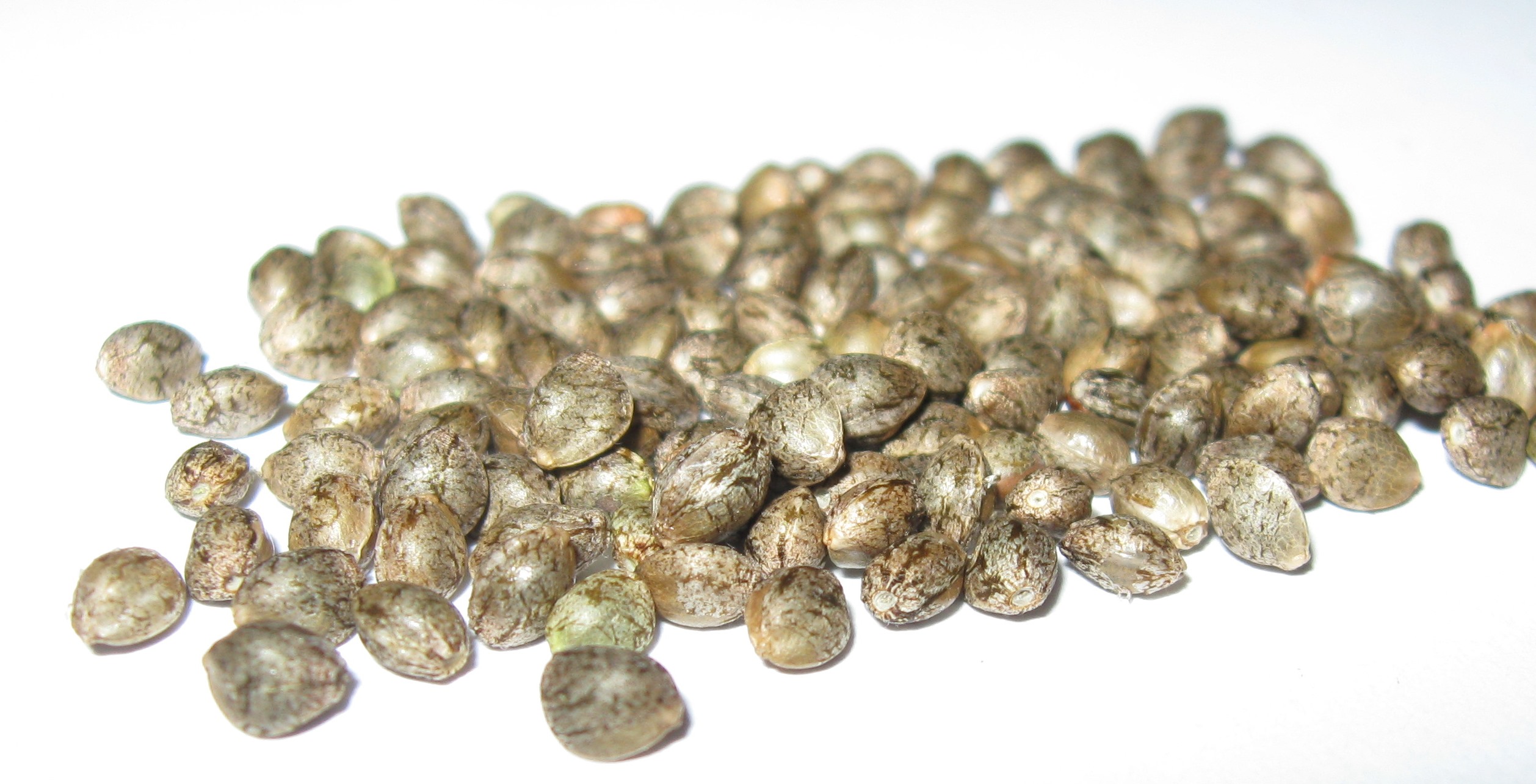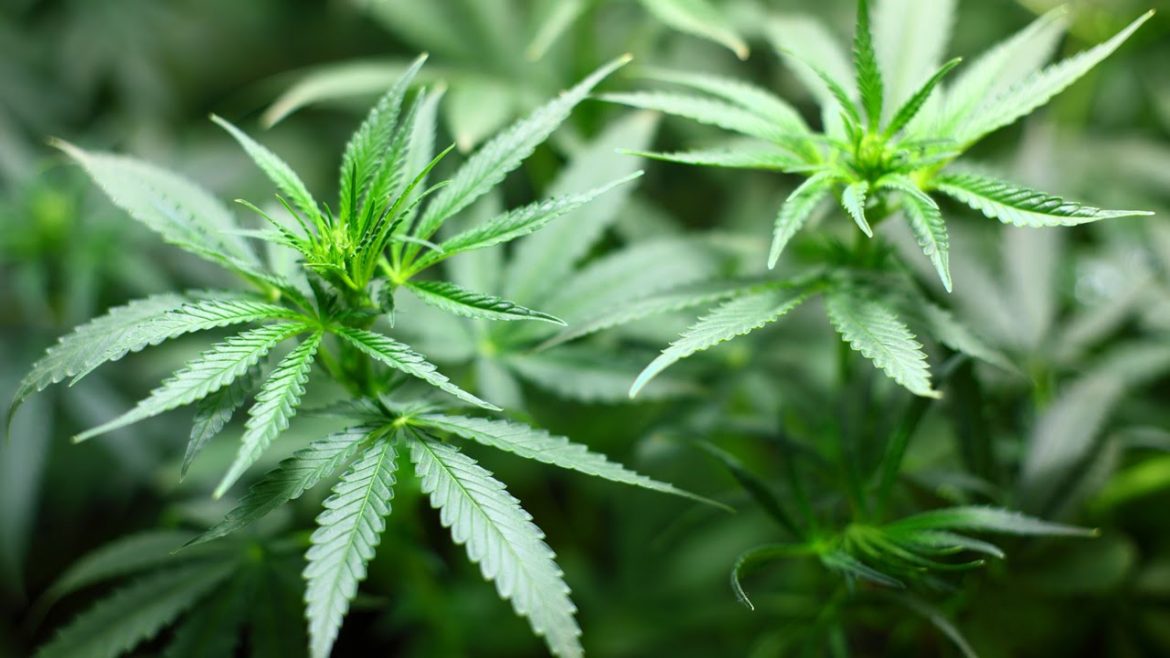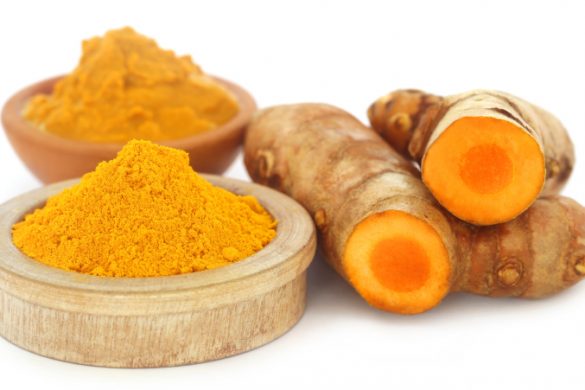By Dr Senani Wijesena 14/11/2016
Introduction and legal issues
Cannabis, also known as marijuana, is derived from the Cannabis plant (Cannabis Sativa), which originated in Central Asia but is grown worldwide today. The main active ingredient in cannabis is delta-9-tetrahydrocannabinol, commonly known as THC. Marijuana is made from the dried flowers and leaves of the cannabis plant and has a higher amount of THC than other types of cannabis plants such as hemp. Cannabis has been used for thousands of years for medicinal purposes including control of pain, inflammation and anti-cancer effects and the hemp plant has been used for non-medicinal purposes such as papers/textiles and building as well as health promoting effects (oils/seeds).
In the United States, at the federal level, cannabis is a controlled substance and is classified as a Schedule I agent (a drug with a high potential for abuse, and no currently accepted medical use). Currently, though, the use of both recreational and medicinal marijuana has been entirely legalized in the states of Alaska, Colorado, Oregon, and Washington. As of June 2016, 25 states and Washington, D.C. have legalized the use of medical marijuana. Advocates of marijuana legalization argue that the budgetary impact of removing cannabis from Schedule I of the Controlled Substances Act and legalizing its use in the United States could save billions by reducing government spending for prohibition enforcement in the criminal justice system. Additionally, they argue that billions in annual tax revenues could be generated through proposed taxation and regulation. Patient advocates argue that by reclassifying marijuana, millions of Americans who are currently prevented from using medical marijuana would be able to benefit from its therapeutic value.
In Australia for non-medicinal purposes it is illegal to use, possess, grow or sell cannabis, but the penalties for cannabis offences are different in each state and territory. Between 2014 and 2016, the laws around medical cannabis started to change in Australia. In April 2015, the NSW, QLD and Victorian governments made plans to undertake medical cannabis trials (due to start in 2016/2017). On the 24th of February 2016, the Australian parliament made amendments to the Narcotic Drugs Act 1967 that legalized the growing of cannabis for medicinal and scientific purposes in Australia (under license and permit based cannabis cultivation scheme). Under the new federal scheme, patients with a valid prescription can possess and use medicinal cannabis products manufactured from cannabis legally cultivated in Australia, provided the supply has been authorised under the Therapeutic Goods Act and relevant state and territory legislation. The changes put medical cannabis in the same category as restricted medicinal drugs such as morphine. State wise, the Victorian government announced last year that it will legalise the drug for medical use in 2017. NSW is also currently conducting trials into a cannabis-based drug, Epidolex, with a focus on children with epilepsy, and leading the state-based focus on medical marijuana. In July 2016, the NSW government secured a licence from the Federal government to grow cannabis for medical use in Australia. This was the first license approved by the Federal government since legislation changed earlier this year. In August in line with a change to the Poisons and Therapeutic Goods Amendment Regulation 2016 in NSW allowed medical practitioners in the state to apply to the NSW Government and the TGA for permission to prescribe cannabis-based products that are not on the Register of Therapeutic Goods to patients.
Legislation and drug trials are still underway to finalise details of use and availability for medicinal purposes and is currently not legally available despite the passing of laws to legalise the growing of cannabis earlier this year.
Recreational cannabis cultivation and use is still currently illegal in Australia.

The Cannabis plant- Hemp versus Marijuana
Cannabis plants are composed of three different sub species with Cannabis Sativa L being the most widely grown. The Cannabis plant produces health beneficial resin containing active compounds called cannabinoids, in addition to other compounds found in plants, such as terpenes and flavonoids. The highest concentration of cannabinoids is found in the female flowers of the plant. Cannabinoids include 113 different types, including tetrahydrocannabinol (THC), Cannabidiol (CBD), Cannabichromene and other cannabinoids. THC has psychoactive (mind altering) effects as well as medicinal properties. CBD on the other hand, has no psychoactive activity but several medicinal effects.
The cannabis plant is grown throughout the world as different types e.g. Marijuana and the Hemp plant and contain different quantities of the various cannabinoids. Hemp refers to strains of Cannabis sativa that have been bred specifically for fiber as well as seeds, leaves and stalks used for non medicinal purposes such as clothing and construction, including textiles, paper, concrete like materials and plastic as well as biofuels, cleaning agents, oils and topical ointments, cosmetics, nutritional benefits (phytochemicals and flavonoid content) and a wide and growing variety of other medicinal purposes. It contains less than 0.3% THC. Restrictions are placed on its growth to minimize quantities of THC in the plant. The importance of the hemp plant being a multi-purpose crop in our current climatic and economic environment directs us towards the use of sustainable resources to reduce our dependence on petrochemicals and to minimize the impact on the environment. The hemp plant has good resistance to drought and pests, has a well developed root system preventing soil erosion and lower water requirement compared to other crops e.g. cotton.
The high amount of plant phytochemicals (active compounds) including Sterols and Terpenes (volatile oils) in the hemp plant such as B sitosterol and B amyrin respectively confers antibacterial properties to the plant fibres and is of particular interest in the medical industry. Terpenes also have anti-fungal, anti inflammatory and anticancer properties. D-limonene (another type of terpene in hemp), which is also commonly found in citrus essential oils, exhibits potent anti-cancer, anti-anxiety and immunostimulating properties in humans. B-myrcene, a terpene found in hemp as well as hops is recognised as having potent anti-inflammatory, analgesic and anxiolytic (anti-anxiety) properties. Alpha-Pinene is an acetylcholinesteral inhibitor, which could enhance memory abilities and counteract the memory deficits induced by THC. These triterpenes (terpenes) are key contributors to the pharmacological properties of numerous medicinal herbs. These terpenes are found in both the hemp plant and the marijuana plant.
Cannabis also contains numerous phenolic compounds such as flavones, stilbenes and lignans. In Cannabis, about 20 flavonoids have been identified including luteolin, kaempferol and quercetin. The lignin content is high in the seeds. These phenolic compounds may act as antioxidants. In humans, it has been shown that there is a correlation between dietary phenolic compound intake and a reduced incidence of chronic diseases such as cancers, cardiovascular and neurodegenerative diseases, having anti-inflammatory, anticancer and neuro-protective effects. Cannflavin A and Cannflavin B are potent anti-inflammatory compounds in Hemp and exert its effect via inhibition of the inflammatory cascade/prostaglandin E2 and 5-lipoxygenase. The lignans in Hemp such as secoisolariciresinol and pinoresinol are converted into enterolignans by the anaerobic intestinal microflora and they are mammalian oestrogen precursors (phytoestrogens). Due to the structural similarity of enterolignans with mammalian oestrogens, these compounds have potential for combating hormone dependent cancers.
The hemp plant contains a smaller percentage (<0.3%) of psychoactive substance THC, and much more cannabidiol (CBD). The Marijuana plant, however, which is more difficult to grow, contains much higher amounts (5-30%) THC and less CBD. Hemp plants, hence, contain more cannabidiol (CBD) than THC, while marijuana produces more THC than CBD. Cannabidiol (CBD) as previously mentioned has no psychoactive effect but has been found to have anticancer, antiepileptic, anti-inflammatory and anti-nausea properties. THC has psychoactive-mind altering effects as well as potent anti-analgesia, anti-inflammatory, hypo-activity, neuroprotective antioxidant effects.
Cannabis and history of medicinal use
Cannabis use for medicinal purposes dates back at least 3,000 years in China and its use as the hemp plant for textiles and pottery has been noted since at least 8000 years ago. For a detailed description of the historical use of the cannabis plant world-wide click on this link.
The first record of common hemp seeds brought to Australia was with the First Fleet in 1788 at the request of Sir Joseph Banks, who marked the cargo “for commerce” in the hope that hemp would be produced commercially in the new colony. For 150 years early governments in Australia actively supported the growing of hemp with gifts of land and other grants, and the consumption of cannabis in Australia in the 19th century was believed to be widespread. Cannabis was introduced into Western medicine in 1841 in England by W.B. O’Shaughnessy, an Irish physician who learned of its medicinal properties while working in India for the British East India Company. Its use was promoted for reported analgesic, sedative, anti-inflammatory, antispasmodic, and anticonvulsant effects. Like many developed nations Australia first responded to the issue of cannabis use in the 1920s, acting as a signatory to the 1925 Geneva Convention on Opium and Other Drugs that saw the use of cannabis first restricted for medicinal and scientific purposes. This prohibition model was applied with little research into cannabis use in Australia. As a result of pressure from the United Kingdom, Australia began implementing local laws consistent with the Geneva Convention and according to McDonald and others, in 1928 the state of Victoria enacted legislation that prohibited the use of cannabis; other states followed suit slowly over the next three decades. As in other Western countries, cannabis use was perceived as a significant social problem in Australia; new drug control laws were enacted at the state and federal level, and penalties for drug offences were increased. In 1938, cannabis was outlawed in Australia due to concerns of its “addictive nature” and risk of ‘dependency’.
Cannabis and its chemistry
Cannabinoids are a group of 21-carbon–containing terpenophenoliccompounds produced uniquely by Cannabis species (e.g., Cannabis sativa L). These plant-derived compounds may be referred to as phyto-cannabinoids. Although delta-9-tetrahydrocannabinol (THC) is the primary psychoactive ingredient, other known compounds with biologic activity are cannabinol, cannabidiol (CBD), cannabichromene, cannabigerol, tetrahydrocannabivarin, and delta-8-THC. CBD, in particular, is thought to have significant analgesic, anti-inflammatory, and anxiolytic activity without the psychoactive effect (high) of delta-9-THC. CBD as previously mentioned is found in higher levels in the hemp plant.
When oral Cannabis is ingested, there is a low (6%–20%) and variable oral bioavailability. Peak plasma concentrations of delta-9-tetrahydrocannabinol (THC) occur after 1 to 6 hours and remain elevated with a terminal half-life of 20 to 30 hours. Taken by mouth, delta-9-THC is initially metabolized in the liver to 11-OH-THC, a potent psychoactive metabolite.
Inhaled cannabinoids are rapidly absorbed into the bloodstream with a peak concentration in 2 to 10 minutes, declining rapidly for a period of 30 minutes and with less generation of the psychoactive 11-OH metabolite.
The human body synthesises its own natural cannabinoids called endocannabinoids and include anandamide which is produced in parts of the brain that are important in memory and higher thought processes and in areas that control movement. Anandamide acts in pain, depression, appetite, memory and fertility (uterine synthesis) and exerts its effect after binding to the receptors CB1 and CB2. The CB1 receptor is found in high levels in the brain as well as spinal and peripheral nervous tissue, whereas the CB2 receptor is located mainly in the immune system. Synthetic and plant cannabinoids exert their effects via acting on these receptors.
Cannabinoids and Human Health
Cannabinoids and anticancer effect
Many animal studies have suggested that cannabinoids (THC and CBD) may have a protective effect against the development and growth of numerous types of tumors in various organs including the colon, breast, lung, brain, pancreas and liver as well as myeloma, lymphoma and melanoma.
Cannabinoids may cause antitumor effects by various mechanisms, including induction of cell death, inhibition of cell growth, and inhibition of tumor angiogenesis (blood vessel) invasion and metastasis (spread outside the local area of tumour growth). Cannabinoids appear to kill tumor cells but do not affect their non-transformed (normal cell) counterparts and may even protect them from cell death. For example, these compounds have been shown to induce apoptosis (cell death) in glioma (brain cancer) cells in culture and induce regression of glioma tumors in mice and rats, while they protect normal glial cells of astroglial and oligodendroglial lineages from apoptosis mediated by the CB1receptor.
Other investigations have confirmed that CB1 and CB2 receptors may be potential targets in non-small cell lung cancer and breast cancer.
CBD is known to inhibit the survival of both estrogen receptor–positive and estrogen receptor–negative breast cancer cell lines, inducing apoptosis (cell death) in a concentration-dependent manner while having little effect on normal breast cells. Studies of metastatic breast cancer have shown that cannabinoids may lessen the growth, number, and spread of tumors. In in vitro experiments involving colorectal cancer cell lines, the investigators found that CBD protected DNA from oxidative damage, increased endocannabinoid levels, and reduced cell growth. Another investigation into the antitumor effects of CBD examined the role of intercellular adhesion molecule-1 (ICAM-1). ICAM-1 expression has been reported to be negatively correlated (reduced occurrence) with cancer metastasis. In lung cancer cell lines, CBD up-regulated ICAM-1, leading to decreased cancer cell invasiveness. Cannabinoids also decrease the activity of the enzyme matrix metalloproteinase 2 leading to decreased tumor-cell invasiveness and decreased potential for metastasis. Despite an absence of clinical trials, abundant anecdotal reports that describe patients having remarkable responses to cannabis as an anticancer agent, especially when taken as a high-potency orally ingested concentrate, as well as in-vitro and animal studies are circulating. Human studies should be conducted to address critical questions related to the foregoing effects.
Cannabinoids and anti-nausea effect/treatment
Cannabinoid receptors found in brain cells as well as in the intestine and peripheral nervous system may have a role in controlling nausea and vomiting. Several studies on drug forms of cannabis as well as reports from patients who have self-medicated with inhaled cannabis indicate that cannabis is an effective antiemetic (anti-vomiting). Very few formal studies have been undertaken evaluating the effect of non-medicated forms of cannabis on nausea. Delta-9-tetrahydrocannabinol (THC) has been available as a prescription medication (dronabinol and nabilone) approved for treatment of cancer chemotherapy-induced nausea and vomiting and anorexia associated with the AIDS wasting syndrome and acts via the CB1 receptor. A quantitative systematic review that included 30 randomized comparisons of oral nabilone, oral dronabinol, or the intramuscular levonantradol preparation (no longer available) with placebo in 1366 patients receiving chemotherapy found that, as antiemetics, cannabinoids were more effective than prochlorperazine (stemetil), metoclopramide (maxolon), chlorpromazine (largactil), thiethylperazine, haloperidol, domperidone, or alizapride. Recently the interaction with cannabinoids and the serotonin receptor in the brain and periphery have also been found to play a role in inhibiting nausea and vomiting.
Cannabinoids and pain
Cannabis may offer a viable and better alternative to opiates (e.g. morphine) and other analgesics (pain relief medications) such as anticonvulsants and antidepressants which currently poorly control chronic pain in patients with cancer, neuropathic and central pain states, particularly in view of aging populations in industrialised nations. THC has the most effective analgesic effects in cannabis, supported by other minor active constituents such as CBD, cannabis terpenoids and flavonoids.
It is well known that cannabinoid receptor agonists (activates receptor) have antinociceptive (blocks pain) and anti-hyperalgesic effects at the peripheral and central (spinal and brain) levels, including nerve endings and has been shown in several randomized control trials to have a modest effect in controlling chronic neuropathic pain. The reports indicate that individuals on average report a 30% reduction in pain when using cannabis compared to placebo. This effect has been found for inhaled and vaporized forms of cannabis as well as pharmacological products that contain cannabis. Interestingly medium dose cannabis cigarettes (3.5% THC) were as effective as higher doses (7.5% THC). Smoked cannabis seems to have a rapid onset due to the efficient and rapid delivery of THC to the brain. THC can be detected immediately in plasma after the first puff of a cigarette; peak concentrations occur within 10 minutes then decrease to 20% of peak by 30 minutes. Smoked cannabis has its hazards including inhaling pyrroles produced by burning. One alternative are devices which vaporize cannabis leaves by heating the plant product to below the temperature of combustion permitting inhalation of volatilized gases minus hazardous pyrroles. Vaporization is not a perfect solution since carbon monoxide is formed, but levels are significantly lower than with smoking. Drugs such as Sativex®, a cannabis derived oromucosal spray containing equal proportions of THC (partial CB1 receptor agonist) and cannabidiol (CBD, a non-euphoriant, anti-inflammatory analgesic with CB1receptor antagonist and endocannabinoid modulating effects) was approved in Canada in 2005 for treatment of central neuropathic pain in multiple sclerosis, and in 2007 for intractable cancer pain. Numerous randomized clinical trials have demonstrated safety and efficacy for Sativex in central and peripheral neuropathic pain, rheumatoid arthritis and cancer pain. Studies also indicate that cannabinoids may also be able to prevent the development of chemotherapy induced peripheral neuropathy.
Cannabis has also been found to be of benefit as pain control in individuals with fibromyalgia and rheumatoid arthritis and has anti-inflammatory properties. In patients with fibromyalgia, there is good evidence that the cannabinoid receptors play a major role in modulating neurotransmitter release such as serotonin and dopamine among others. These neurotransmitters are important in modulating stress and pain responses as well as sleep and anxiety.
Cannabis and adverse effects
Acutely and over the long-term cannabis may have unwanted systemic (generalised) and psychoactive adverse effects. These effects are dose-related, are of mild to moderate severity, appear to decline over time, and are reported less frequently in experienced than in naïve users. Reviews suggest the most frequent side effects are dizziness or lightheadedness (30%-60%), dry mouth (10%-25%), fatigue (5%-40%), muscle weakness (10%-25%), muscle pain (25%), and palpitations (20%). Cough and throat irritation are reported in trials of smoked cannabis. Tachycardia (rapid heart rate) and postural hypotension (low blood pressure) are infrequent but caution is warranted in patients with cardiovascular disease, and possibly younger adults who intend to embark on very vigorous physical activity. At higher doses, sedation and ataxia with loss of balance are frequent. Participants in some, but not all studies report euphoria. After repeated smoked or oral marijuana doses, tolerance is rapidly acquired (in two to 12 days) to many of its adverse effects, e.g., cardiovascular, and many subjective and cognitive effects. After exposure is stopped, tolerance is lost with similar rapidity.
Fatal overdose with cannabis alone has not been reported. In terms of acute drug interactions, additive effects of cannabis, anticholinergics, and CNS depressants should be expected (e.g., increased sedation, dizziness, dry mouth, confusion). Smoking itself (e.g., cannabis or tobacco) induces CYP 1A2 (liver enzymes that metabolize chemicals), and may increase clearance of some antipsychotics (e.g., olanzapine, clozapine) and antidepressants (e.g., some tricyclics, mirtazepine). Overall then, the acute medical risks of THC as used in clinical trials are rather low.
There can be adverse psychiatric side effects. THC intoxication and euphoria can be disturbing, particularly to elderly patients. Anxiety and panic attacks occur, as do frank psychotic reactions (principally paranoia), as well as so- called “paradoxical” effects of dysphoria, dejection, and depressed mood. Although unlikely to be a factor in the application of cannabinoids for pain, there is concern that early adolescent use of cannabis may heighten later risk of psychosis, and evidence that genetic variation (single nucleotide polymorphisms) heightens vulnerability.
Acute cannabinoid intoxication adversely impacts processing speed, attention, learning and recall, perception of time and velocity, reaction time and psychomotor abilities in a dose-dependent fashion. Formal neuropsychological testing in clinical trials reveals mild impairment at usual analgesic doses. While cannabis can acutely impair skills required to drive motor vehicles in a dose-related fashion, epidemiological data are inconclusive with regard to the association of traffic accidents and use of cannabis. What is clearer from experimental and epidemiologic data is that driving under the influence of both alcohol and cannabis in combination confers greater risk of accidents than the risk of either drug alone.
The longer-term health risks of cannabis are unclear, and the evidence is based on non-medical use. Long-term use of inhaled cannabis may be associated with dependence and increased respiratory symptoms; but some epidemiological studies have not found more lung disease in long-term users, once the effects of tobacco are accounted. Long- term use of inhaled cannabis has not been associated with increased risk of lung or gastrointestinal cancers, although a meta-analysis found evidence of premalignant changes in the respiratory tract. There is some evidence that among individuals with pre-existing cardiac disease, cannabis users have an increased risk of myocardial infarction in the hour after smoking cannabis compared to non- users. A recent meta-analysis showed no major residual effects on neurocognitive functioning in long-term daily users of cannabis. THC rapidly crosses the placenta and accumulates in breast milk of nursing mothers, but there is no systematic evidence of direct or behavioral teratogenicity (birth defects).
In reviewing the possible acute and long term adverse effects of cannabinoids as therapeutic agents one needs also to be mindful that other agents that are used for treatment of pain or spasticity also have adverse effects. Opioids (e.g. morphine) produce sedation, nausea, constipation and dependence, withdrawal from which results in serious abstinence syndrome with much more severe effects – e.g. severe autonomic, gastrointestinal, and psychiatric – than the rather mild cannabis withdrawal phenomena. Tricyclic antidepressants and antiepileptic drugs commonly prescribed for chronic pain have psychotropic (e.g. sedation), anticholinergic (e.g. constipation, dizziness, palpitations, visual disturbance, urinary retention), and neuromuscular effects. Benzodiazepines that are sometimes prescribed for spasticity can produce sedation, psychomotor incoordination, memory lapses, and paradoxical reactions, as well as dependence and withdrawal syndromes. Opioids and sedative-hypnotics are also drugs of abuse, and their ability to induce physiological dependence and serious withdrawal states exceed those of cannabis. Therefore, judgements on relative benefits and risks of cannabinoids as medicines need to be viewed within the broader context of risk-benefit of other agents as well.
References
- I. Abrams. Integrating cannabis into clinical cancer care. Current Oncology. 2016, March 23 S2 (S8-14).
- Igor Grant et al. Medical Marijuana: Clearing away the smoke. The open neurology journal, 2012, 6, 18-25
- Ethan Russo. Cannabinoids in the management of difficult to treat pain. Therapeutics and clinical risk management. 2008: 4(1) 245-259
- J Manzanares et al. Role of the cannabinoid system in pain control and therapeutic implications for the management of acute and chronic pain episodes. Current Neuropharmacology, 2006. 4, 239-257
- Jimena Fiz et al. Cannabis use in patients with fibromyalgia: Effect on symptoms relief and health related quality of life. Plos, Open access. April 21, 2011.
- Wikepedia
- Liu WM et al. Cannabis-derived substances in cancer therapy-and emerging anti-inflammatory role for the cannabinoids. Curr Clin Pharmacol. 2010 Nov: 5 (4) 281-7
- Abrams D, Guzman M. Cannabis in cancer care. Clin Pharmacol Ther. 2015 Jun; 97 (6); 575-586
- Mary Lynch, Fiona Campbell. Cannabinoids for treatment of chronic non cancer pain; a systematic review of randomized trials. Br J Clin Pharmacol. 2011 Nov; 72 (5) : 735-744







